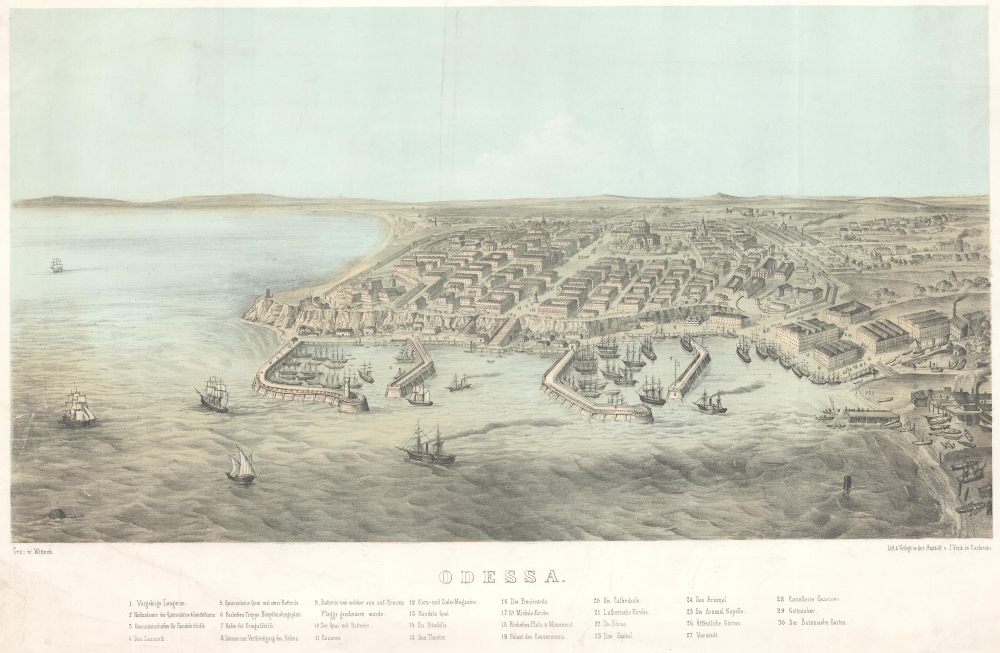1854 Wittock Chromolithograph View of Odesa, Ukraine, in the Crimean War
Odessa-wittock-1854
Title
1854 (undated) 13.5 x 20.75 in (34.29 x 52.705 cm)
Description
A Closer Look
The view looks southward on Odesa. The city's excellent sheltered ports, wide streets, elevated location, and dramatic Orthodox cathedral are evident. This view was likely drawn by Whittock just prior to the 1854 Crimean War (1853 - 1856) bombardment of Odesa by the British Royal Navy - an effort to stymie Russian naval power and break supply lines. The attack devastated Odesa's port and commercial infrastructure, but the British failed to capture the city and its defenses remained strong.Chromolithography
Chromolithography, sometimes called oleography, is a color lithographic technique developed in the mid-19th century. The process involved using multiple lithographic stones, one for each color, to yield a rich composite effect. Oftentimes, the process would start with a black basecoat upon which subsequent colors were layered. Some chromolithographs used 30 or more separate lithographic stones to achieve the desired product. Chromolithograph color could also be effectively blended for even more dramatic results. The process became extremely popular in the late 19th and early 20th centuries when it emerged as the dominant method of color printing. The vivid color chromolithography produced made it exceptionally effective for advertising and propaganda imagery.Publication History and Census
This view was drawn by Englishman Nathaniel Whittock, who likely saw Odessa during the Crimean War. Whittock published his own version of this map in London, which occasionally appears on the market, but the present example was lithographed in Karlsruhe, Germany by J. Veith. Scarce.Cartographer
Nathaniel Whittock (January 26, 1791 - August 12, 1860) was an English landscape, map, and topographical engraver active in London in the first half of the 19th century. He was best known for aerial perspective bird's-eye Views with several important views of English and English Colonial cities in his corpus. Whittock was born in Westminster. His early education is mired in obscurity, but from 1824, he appears as 'Teacher of Drawing and Perspective, and Lithographist to the University of Oxford' - a significant posting. He worked for the academic community of Oxford, publishing several views for the Ashmolean Museum. In 1828, he relocated to London, setting up shop in partnership with Edward Goodman as 'Whittock and Goodman'. This relationship was formally bought out by Whittock and dissolved on November 21, 1829. By the early 1830s, he was established in his own lithography studio at 24 Garnault Place, Spa Fields, Islington, London. In 1848, he partnered with his cousin Henry Hyde, relocating his operations to 34 Richard Street, Islington. This relationship lasted until his death in 1860. More by this mapmaker...

